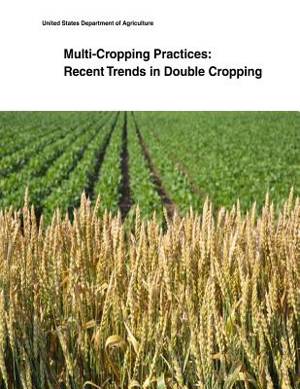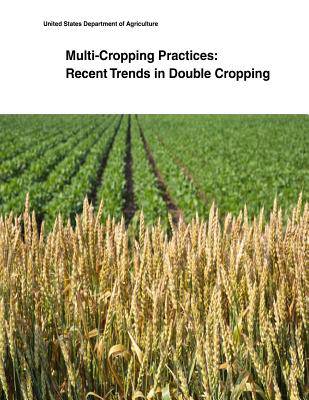
- Afhalen na 1 uur in een winkel met voorraad
- Gratis thuislevering in België vanaf € 30
- Ruim aanbod met 7 miljoen producten
- Afhalen na 1 uur in een winkel met voorraad
- Gratis thuislevering in België vanaf € 30
- Ruim aanbod met 7 miljoen producten
Multi-Cropping Practices
Recent Trends in Double Cropping
United States Department of Agriculture
Paperback | Engels
€ 29,45
+ 58 punten
Omschrijving
Over the last decade, growing demand for agricultural commodities-for both food and fuel-has increased the incentives for farm operators to increase production. One way to expand production and potentially increase the return to farming is by intensifying the use of existing cropland. One form of intensification is double cropping-the harvest of two crops from the same field in a given year. From 1999 to 2012 double cropping occurred on about 2 percent of total cropland in most years. Soybeans were, on average, the most common crop found on double-cropped acres over this time period, and, in 2012, winter wheat most commonly preceded these soybean plantings. However, regional and temporal variation is apparent in all double-cropping trends, likely indicating farmers' responsive-ness to local conditions and changing market incentives. Although double cropping has the potential to limit the environmental consequences associated with cropland expansion (such as increased soil erosion and loss of wildlife habitat or carbon sinks) as U.S. farmers increase production to meet growing global demand, it also may introduce negative environmental consequences of its own. The trends and analysis provided in this report are intended to support future discussion on the factors influencing its use and help inform discussions about the merits of expanding its use.
Specificaties
Betrokkenen
- Auteur(s):
- Uitgeverij:
Inhoud
- Aantal bladzijden:
- 24
- Taal:
- Engels
Eigenschappen
- Productcode (EAN):
- 9781505433906
- Verschijningsdatum:
- 9/12/2014
- Uitvoering:
- Paperback
- Formaat:
- Trade paperback (VS)
- Afmetingen:
- 216 mm x 279 mm
- Gewicht:
- 81 g

Alleen bij Standaard Boekhandel
+ 58 punten op je klantenkaart van Standaard Boekhandel
Beoordelingen
We publiceren alleen reviews die voldoen aan de voorwaarden voor reviews. Bekijk onze voorwaarden voor reviews.









